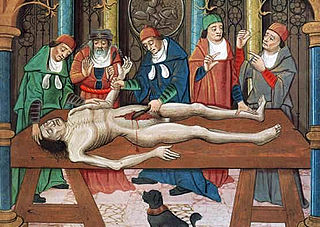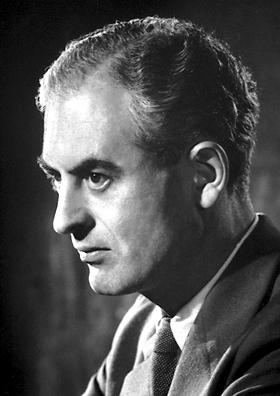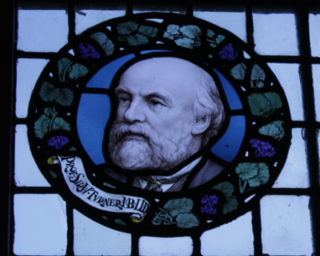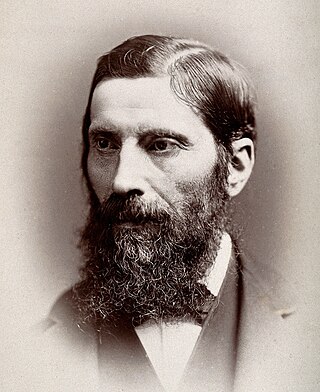
Marsupials are a diverse group of mammals belonging to the infraclass Marsupialia. They are natively found in Australasia, Wallacea, and the Americas. One of the defining features of marsupials is their unique reproductive strategy, where the young are born in a relatively undeveloped state and then nurtured within a pouch on their mother's abdomen.

The history of anatomy extends from the earliest examinations of sacrificial victims to the sophisticated analyses of the body performed by modern anatomists and scientists. Written descriptions of human organs and parts can be traced back thousands of years to ancient Egyptian papyri, where attention to the body was necessitated by their highly elaborate burial practices.

Sir Peter Brian Medawar was a British biologist and writer, whose works on graft rejection and the discovery of acquired immune tolerance have been fundamental to the medical practice of tissue and organ transplants. For his scientific works, he is regarded as the "father of transplantation". He is remembered for his wit both in person and in popular writings. Richard Dawkins referred to him as "the wittiest of all scientific writers"; Stephen Jay Gould as "the cleverest man I have ever known".

George Emil Palade was a Romanian-American cell biologist. Described as "the most influential cell biologist ever", in 1974 he was awarded the Nobel Prize in Physiology and Medicine along with Albert Claude and Christian de Duve. The prize was granted for his innovations in electron microscopy and cell fractionation which together laid the foundations of modern molecular cell biology, the most notable discovery being the ribosomes of the endoplasmic reticulum – which he first described in 1955.

Tactile corpuscles or Meissner's corpuscles are a type of mechanoreceptor discovered by anatomist Georg Meissner (1829–1905) and Rudolf Wagner. This corpuscle is a type of nerve ending in the skin that is responsible for sensitivity to pressure. In particular, they have their highest sensitivity when sensing vibrations between 10 and 50 hertz. They are rapidly adaptive receptors. They are most concentrated in thick hairless skin, especially at the finger pads.

Palmaris brevis muscle is a thin, quadrilateral muscle, placed beneath the integument of the ulnar side of the hand. It acts to fold the skin of the hypothenar eminence transversally.

Francis Peyton Rous was an American pathologist at the Rockefeller University known for his works in oncoviruses, blood transfusion and physiology of digestion. A medical graduate from the Johns Hopkins University, he was discouraged from becoming a practicing physician due to severe tuberculosis. After three years of working as an instructor of pathology at the University of Michigan, he became dedicated researcher at the Rockefeller Institute for Medical Research for the rest of his career.

The esophageal glands are glands that are part of the digestive system of various animals, including humans.

Short bones are designated as those bones that are more or less equal in length, width, and thickness. They include the tarsals in the ankle and the carpals in the wrist. They are one of five types of bones: short, long, flat, irregular and sesamoid. Most short bones are named according to their shape as they exhibit a variety of complex morphological features

Sir William Turner was an English anatomist and was the Principal of the University of Edinburgh from 1903 to 1916.

The fabella is a small sesamoid bone found in some mammals embedded in the tendon of the lateral head of the gastrocnemius muscle behind the lateral condyle of the femur. It is an accessory bone, an anatomical variation present in 39% of humans. Rarely, there are two or three of these bones. It can be mistaken for a loose body or osteophyte. The word fabella is a Latin diminutive of faba 'bean'.

Osteoderms are bony deposits forming scales, plates, or other structures based in the dermis. Osteoderms are found in many groups of extant and extinct reptiles and amphibians, including lizards, crocodilians, frogs, temnospondyls, various groups of dinosaurs, phytosaurs, aetosaurs, placodonts, and hupehsuchians.

In the context of human evolution, vestigiality involves those traits occurring in humans that have lost all or most of their original function through evolution. Although structures called vestigial often appear functionless, a vestigial structure may retain lesser functions or develop minor new ones. In some cases, structures once identified as vestigial simply had an unrecognized function. Vestigial organs are sometimes called rudimentary organs. Many human characteristics are also vestigial in other primates and related animals.

Edward Percival (Perceval) Wright FRGSI was an Irish ophthalmic surgeon, botanist and zoologist.

Ewald Rudolf Weibel HonFRMS was a Swiss anatomist and physiologist and former director of the Institute of Anatomy at the University of Bern. He was one of the first scientists to describe the endothelial organelles Weibel–Palade bodies, which are named after him and his Romanian-American colleague George Emil Palade. He was known for his work on the anatomy of gas exchange in lungs on multiple spatial scales using stereology.

Charles Joseph Patten was an Irish anatomist and ornithologist.

Sir George Murray Humphry, FRS was an English professor of physiology and anatomy at the University of Cambridge, surgeon, gerontologist and medical writer.
James Thomas Wilson FRS (1861-1945) was a Professor of Anatomy at the University of Cambridge and an elected Fellow of the Royal Society.
Herbert Henry Woollard, FRS was an Australian academic, anatomist and army medical officer.
The Department of Physiology, Development and Neuroscience, (PDN) is a part of the School of Biological Sciences at the University of Cambridge. Research in PDN focuses on three main areas: Cellular and Systems Physiology, Developmental and Reproductive Biology, and Neuroscience and is currently headed by Sarah Bray and William Colledge. The department was formed on 1 January 2006, within the School of Biological Sciences at the University of Cambridge from the merger of the Departments of Anatomy and Physiology. The department hosts the Centre for Trophoblast Research and has links with the Cambridge Centre for Brain Repair, the Cambridge Stem Cell Institute, and the Gurdon Institute.

















